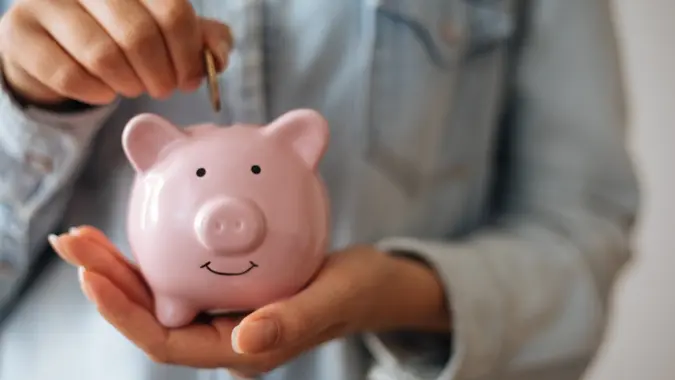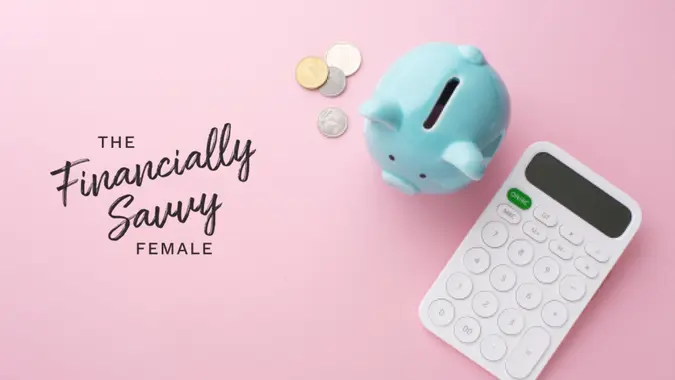44% of Americans Spend More on Snacks Than Netflix: How To Fight ‘Snackflation’

Commitment to Our Readers
GOBankingRates' editorial team is committed to bringing you unbiased reviews and information. We use data-driven methodologies to evaluate financial products and services - our reviews and ratings are not influenced by advertisers. You can read more about our editorial guidelines and our products and services review methodology.

20 Years
Helping You Live Richer

Reviewed
by Experts

Trusted by
Millions of Readers
There’s nothing quite like enjoying a salty snack or sweet treat at the end of a day. It tastes good and is a reward for a long day at work. However, a recent BadCredit.org survey revealed that 44% of Americans spend more on snacks than they do on streaming services.
Other findings reveal the extent of snack spending and how it’s impacting Americans’ finances. By following these simple steps, it’s easier to avoid snackflation so it doesn’t derail your financial goals.
Create a Snack Budget
Food pricing has dramatically increased since 2020. Prices increased by 23.6% from 2020 to 2024, according to the U.S. Department of Agriculture (USDA). Furthermore, the USDA reports food-at-home pricing will increase by 3.3% in 2025. Budgeting is key to managing rising food costs.
Creating a snack budget is no different, yet BadCredit.org found only 11% of Americans polled set a budget for snacks. While budgeting is often viewed as restrictive, it creates freedom to spend what you want. Giving up your favorite snacks isn’t necessary, but having a framework can protect against overspending on late-night urges.
Monitor Your Spending
Budgeting can be a good way to manage personal finances, but it’s useless if your spending doesn’t align with the plan. Tracking your spending, even on snacks, lets you identify exactly what is spent.
Many Americans don’t track spending on snacks. BadCredit.org found that 38% of Americans do not know how much they spend on snack foods. Worse yet, 21% are surprised to learn how much they spend.
Tracking spending may seem difficult, but budgeting apps simplify the process, allowing you to pinpoint spending patterns. This information empowers you to make informed choices and apply necessary adjustments to avoid convenience spending derailing your goals. For example, if you budget $75 monthly for snacks and find that you really spend $50, you can apply the $25 overage to other needs.
Plan Your Spending
Snack food sales reached $156 billion in 2024, according to SNAC International. Sacrificing your favorite snacks isn’t imperative, but planning your spending can provide money-saving opportunities to stretch a budget.
For example, for Americans who love to have snacks on the weekend, consider not purchasing convenience items at the office during the week. Peruse weekly sales flyers from local grocery stores to find deals or buy items at warehouse clubs, as pricing tends to be lower than in a traditional grocery store.
The incentive is real, as BadCredit.org found 61% of Americans would reduce snack spending to eradicate debt quicker. Planning can direct spending so that it’s purposeful without compromising financial priorities.
Don’t Let It Derail Financial Goals
Buying snacks may seem insignificant, but it can add up over time. BadCredit.org found that 9% of Americans’ snack spending equals what they spend on monthly car payments. Convenience foods aren’t a necessary expense, but they’re nice to have.
If they’re keeping you in debt or from saving for specific goals, it’s time to review spending. Going cold turkey on snacks isn’t wise. What is? Spending with a purpose to enable achieving financial goals. With a little planning, Americans can have their Little Debbie snack cake (and eat it, too).
Americans are spending more on convenience foods. Snacks are easy to eat and fun to have, and with minimal amounts of purposeful spending, you can enjoy the guilty pleasure without budgetary regret.
More From GOBankingRates
Sources:
BadCredit, “Snackflation: Nearly Half of Americans Spend More on Snacks Than Streaming“
USDA, U.S. food prices rose by 23.6 percent from 2020 to 2024
USDA, Food-at-home prices forecast to rise by 3.3 percent in 2025
SNAC International, 2025 State of the Industry Report
 Written by
Written by  Edited by
Edited by 

























